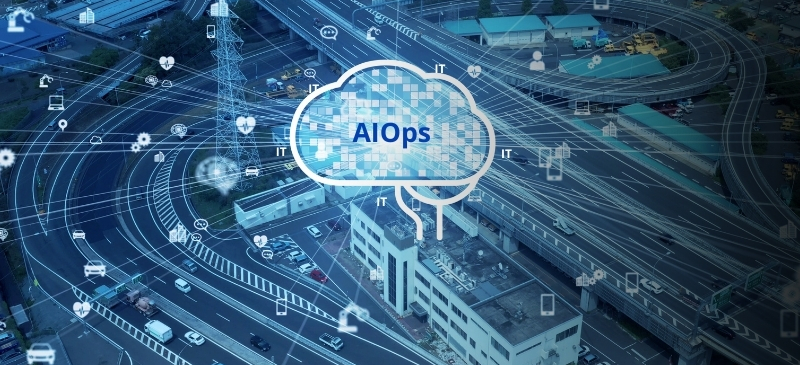Why AIOps Is the Game-Changer Your IT Team Needs
In today’s fast-paced digital landscape, IT teams are expected to keep everything running smoothly — websites, applications, servers, databases, networks, and more. But behind the scenes, managing all these systems has become increasingly complex. There’s a constant flood of data: logs, alerts, metrics, and events coming from every direction. And with that much information, figuring out what’s urgent, what’s noise, and what’s broken can feel like finding a needle in a haystack.
That’s where AIOps — short for Artificial Intelligence for IT Operations — comes in.
What Is AIOps?
AIOps is a modern approach that uses artificial intelligence (AI) and machine learning (ML) to help IT teams make sense of massive amounts of operational data, detect problems faster, and even fix some of them automatically. Think of it like giving your IT systems a brain — one that doesn’t just collect data, but understands it, learns from it, and acts on it.
Instead of reacting to issues after they’ve affected your customers or employees, AIOps allows your IT team to see patterns, spot risks, and resolve problems before they become real disruptions.
The Challenge With Traditional IT Operations
In most companies, IT teams use several monitoring tools to keep an eye on their infrastructure. These tools generate hundreds — sometimes thousands — of alerts every day. Often, they’re minor glitches, repetitive warnings, or false alarms. But buried among them could be a serious issue that needs immediate attention. The problem is, sorting through all of that manually takes time — and in IT, time lost can mean money lost.
Worse yet, when something does go wrong, figuring out the root cause can take hours or even days. Teams end up “firefighting” — jumping from one alert to another, patching symptoms rather than solving the underlying issue.
How AIOps Changes the Game
AIOps changes this reactive model by automating and accelerating how IT teams detect and respond to issues. It brings together data from various sources — application logs, server performance, network activity — and uses machine learning to identify what’s normal and what’s not.
So when something unusual happens, AIOps doesn’t just raise a generic alert. It understands the context, connects the dots between different systems, and highlights the real cause behind the symptoms. And in many cases, it can trigger automated responses, like restarting a failing service or reallocating cloud resources — without waiting for a human to step in.
For example, if a spike in website traffic is causing slower load times, AIOps can identify the root of the slowdown and auto-scale your servers before users notice a thing.

Real-World Benefits You Can Expect
Adopting AIOps brings more than just technical advantages — it delivers real business value. IT teams are no longer overwhelmed by alert fatigue. They spend less time on routine maintenance and more time focusing on innovation and strategy. Systems become more stable, reducing costly downtime. And because AIOps continues learning from past data, it gets better over time, making your IT operations smarter with every incident it handles.
Why Now?
The digital world doesn’t sleep. Whether you’re in e-commerce, banking, healthcare, or any other industry, your users expect fast, seamless, always-on digital experiences. That level of performance can’t be maintained manually anymore. The volume and speed of IT data have outgrown traditional monitoring tools.
Companies that embrace AIOps now are setting themselves up for more resilience, agility, and efficiency in the future. Those that don’t risk falling behind — stuck in reactive mode while competitors predict and prevent problems before they even occur.
Final Thoughts: Predict, Don’t React
The real promise of AIOps lies in its ability to shift IT operations from reactive to proactive — and ultimately predictive. It doesn’t replace your IT team; it empowers them with the insights and tools to act faster, smarter, and with more confidence.
So ask yourself: Are you still reacting to problems after the damage is done, or are you ready to lead with AI-powered intelligence?
While others react, you predict. That’s the AIOps edge.